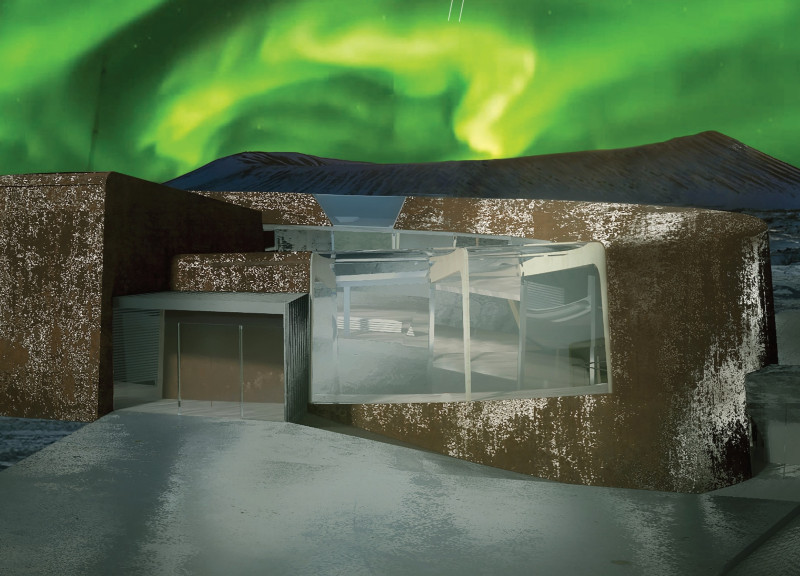5 key facts about this project
The setting in Lake Myvatn is defined by its striking volcanic landscape. The design focuses on integrating the built environment with this natural context, particularly through the exploration of Hverfjall volcano. The aim is to create a facility that facilitates education and engagement with volcanic activity, serving both as a museum and a means of experiencing the surrounding geology.
Functional Organization
The layout features key areas such as a Starting Point, Input/Output area, Guide Point, Crater, Observation Point, and Lookout. Each of these spaces serves a distinct purpose, guiding visitors along a pathway of exploration. The Lookout and Observation Point are strategically placed to give visitors impressive views of the volcanic landscape. This arrangement fosters a connection between the structure and its environment.
Visitor Amenities
The design includes various facilities to enhance visitors' experiences. Amenities such as the Plaza Baja, Shop, Elevator, Entry Tambor, Hall, Hallway, Ticket Office, Outside Deck, Courtyard, Office, and Bathrooms have been incorporated. These areas facilitate easy movement and ensure accessibility, catering to a wide range of visitor needs while providing spaces for gathering and relaxation.
Material Selection
Material choice is essential in establishing a sense of place. Among the materials used are Rukki Panel, Forma Lamella, Cor-Ten, Stretched Canvas, Multilaminated Wood Beam, Metal Support, Glued Wood Columns, Curtain Wall, Wooden Flooring, Heating Panels, Phenolic Wood, Wooden Beam, Retaining Wall, Technical Mezzanine, Top Cover Plate, Natural Rubber Bearing, and Bottom Cover Plate. This selection aims to align the building with its volcanic setting while ensuring durability and functionality for its intended use.
Geological Engagement
The educational aspect of the design is enhanced by the inclusion of various volcanic features, such as Krafla, Hekla, Askja, Grimsvötn, Þríhnúkagígur, Bárðarbunga, Katla, and Snæfellsjökull. These elements not only contribute to the museum's narrative but also engage visitors in the geological story of the region.
A cantilevered lookout deck extends outward, allowing for expansive views of the surrounding landscape. From this vantage point, visitors can observe the intricacies of volcanic processes and appreciate the natural beauty of the area.






















































